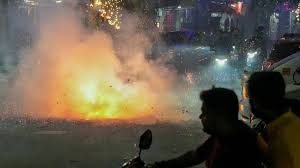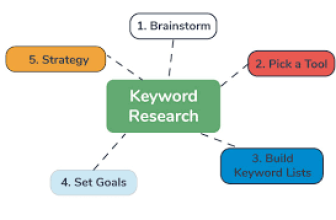
Outline of the Article
Introduction
- Overview of Delhi’s pollution crisis.
- Importance of banning firecrackers.
- Government’s commitment to environmental preservation.
H1: Why the Ban on Firecrackers?
- H2: Alarming Pollution Levels in Delhi
- Air quality statistics.
- Health consequences of pollution.
- H2: Environmental Impact of Firecrackers
- Carbon emissions and toxic chemicals.
- Effects on flora and fauna.
- H2: Public Awareness and Concerns
- Shifting attitudes toward environmental health.
- Role of NGOs and activists.
H1: Details of the Perpetual Ban
- H2: What Does the Ban Include?
- Manufacture, sale, and usage restrictions.
- Online sales prohibition.
- H2: Enforcement Measures
- Fines and penalties for violations.
- Role of local authorities and police.
- H2: Timeline and Public Response
- When the ban was announced.
- Mixed reactions from residents.
H1: Benefits of the Firecracker Ban
- H2: Health Improvements
- Reduction in respiratory and cardiovascular diseases.
- Better air quality during festive seasons.
- H2: Environmental Gains
- Lower carbon footprint.
- Restoration of biodiversity.
- H2: Socio-Economic Impact
- Impact on the firecracker industry.
- Potential for green alternatives.
H1: Challenges and Criticisms
- H2: Resistance from Stakeholders
- Firecracker manufacturers and sellers.
- Cultural and traditional pushback.
- H2: Enforcement Difficulties
- Monitoring illegal sales.
- Addressing public non-compliance.
- H2: Balancing Economy and Environment
- Alternatives to firecracker usage.
- Incentives for affected businesses.
H1: Alternatives to Firecrackers
- H2: Green Firecrackers
- What are they, and how do they work?
- Availability and affordability.
- H2: Community Celebrations
- Laser shows and eco-friendly events.
- Public engagement in sustainable practices.
H1: Role of Public Participation
- H2: Educating Citizens
- Awareness campaigns.
- Importance of individual contributions.
- H2: Collaborative Efforts
- Role of schools and local communities.
- Partnering with environmental organizations.
H1: Global Perspectives on Firecracker Bans
- H2: Countries with Similar Bans
- Examples from China, the U.S., and Europe.
- H2: Lessons for Delhi
- Strategies that worked elsewhere.
- Customizing approaches for local challenges.
H1: Conclusion
- Recap of the importance of the ban.
- Future outlook for a cleaner, greener Delhi.
FAQs
- Why did Delhi impose a perpetual ban on firecrackers?
- How will the government enforce the ban effectively?
- Are there any alternatives to traditional firecrackers?
- What impact will this ban have on the economy?
- How can citizens contribute to the success of the ban?
Introduction
Delhi, often dubbed as the world’s most polluted capital, faces a severe environmental crisis. With air quality plummeting to hazardous levels during festive seasons, the city’s government has taken a bold step: imposing a perpetual ban on the manufacture, sale, and use of firecrackers. This unprecedented move aims to address one of the most pressing issues of our time—air pollution.
The decision reflects the government’s unwavering commitment to environmental preservation and public health. But what does this ban entail, and how will it impact Delhi’s future? Let’s dive deeper into this transformative policy.
Why the Ban on Firecrackers?
Alarming Pollution Levels in Delhi
Delhi’s air quality has been deteriorating for years, with pollution levels peaking during festivals like Diwali. Firecrackers release a toxic cocktail of pollutants, including particulate matter (PM2.5 and PM10), sulfur dioxide, and carbon monoxide, into the air. These pollutants contribute to smog, reduce visibility, and pose severe health risks.
According to the Central Pollution Control Board (CPCB), Delhi’s Air Quality Index (AQI) often crosses the “severe” category during festive seasons. This leads to a surge in respiratory issues, cardiovascular diseases, and hospital admissions.
Environmental Impact of Firecrackers
Firecrackers not only pollute the air but also have a detrimental effect on the environment. The chemicals used in firecrackers can contaminate soil and water, harming plants and aquatic life. Moreover, the loud noise disturbs animals, birds, and even humans, leading to increased stress and anxiety levels.
Public Awareness and Concerns
In recent years, there has been a noticeable shift in public attitudes toward environmental health. Many citizens and environmental activists have raised concerns about the ecological and health consequences of firecrackers. Campaigns like “Say No to Crackers” have gained momentum, highlighting the need for sustainable celebrations.
Details of the Perpetual Ban
What Does the Ban Include?
The Delhi government’s perpetual ban covers:
- The manufacture of firecrackers within the city.
- Sale and distribution, including online platforms.
- Usage of firecrackers in public and private spaces.
This comprehensive approach ensures that every aspect of the firecracker supply chain is addressed.
Enforcement Measures
To ensure compliance, the government has introduced stringent penalties for violators. Fines, confiscation of firecrackers, and legal action are some of the measures in place. Local authorities and police play a crucial role in monitoring and enforcing the ban.
Timeline and Public Response
The announcement of the perpetual ban received mixed reactions. While environmentalists and health experts applauded the move, some sections of the public expressed disappointment, citing cultural traditions. The government has emphasized the need to prioritize public health over short-term celebrations.
Benefits of the Firecracker Ban
Health Improvements
One of the most significant benefits of the ban is the potential for improved public health. With reduced air pollution, residents can breathe cleaner air, reducing the prevalence of respiratory and cardiovascular ailments. This is especially crucial for vulnerable groups like children and the elderly.
Environmental Gains
By curbing firecracker usage, Delhi can significantly lower its carbon footprint. The ban also creates an opportunity to restore biodiversity, as reduced noise and air pollution create a more hospitable environment for wildlife.
Socio-Economic Impact
While the firecracker industry will face challenges, the ban opens doors for innovation. Green alternatives and eco-friendly celebrations can create new economic opportunities, ensuring a balanced approach to growth and sustainability.
Challenges and Criticisms
Resistance from Stakeholders
Firecracker manufacturers and sellers have voiced concerns about the economic impact of the ban. Additionally, some cultural groups argue that firecrackers are an integral part of traditional celebrations.
Enforcement Difficulties
Ensuring compliance with the ban is no easy task. Monitoring illegal sales, especially online, and addressing public non-compliance require robust mechanisms and continuous vigilance.
Balancing Economy and Environment
The government faces the challenge of balancing economic interests with environmental goals. Incentives for affected businesses and promoting alternatives can help address these concerns.
Alternatives to Firecrackers
Green Firecrackers
Green firecrackers are a promising alternative, designed to produce fewer emissions and less noise. These eco-friendly options can help retain the festive spirit without compromising on environmental health.
Community Celebrations
Laser shows, music events, and other community-driven initiatives offer exciting alternatives to traditional firecrackers. These events foster a sense of togetherness while promoting sustainability.
Role of Public Participation
Educating Citizens
Public awareness campaigns play a vital role in the success of the ban. By educating citizens about the harmful effects of firecrackers, the government can encourage voluntary compliance.
Collaborative Efforts
Schools, local communities, and environmental organizations can work together to promote eco-friendly celebrations. Collective efforts can amplify the impact of the ban and pave the way for a cleaner Delhi.
Global Perspectives on Firecracker Bans
Countries with Similar Bans
Several countries, including China, the U.S., and parts of Europe, have implemented restrictions on firecrackers. Their experiences provide valuable insights for Delhi.
Lessons for Delhi
By studying successful strategies from around the world, Delhi can refine its approach to ensure the effectiveness of the ban.
Conclusion
The perpetual ban on firecrackers is a landmark decision that underscores the Delhi government’s commitment to combating pollution. While challenges remain, the potential benefits for public health and the environment far outweigh the drawbacks. By embracing sustainable alternatives and fostering public participation, Delhi can set a powerful example for other cities grappling with pollution.
FAQs
Why did Delhi impose a perpetual ban on firecrackers?
To combat severe air pollution and protect public health.How will the government enforce the ban effectively?
Through strict penalties, monitoring mechanisms, and public awareness campaigns.Are there any alternatives to traditional firecrackers?
Yes, green firecrackers and community celebrations like laser shows.What impact will this ban have on the economy?
While the firecracker industry may face challenges, new opportunities for eco-friendly products can emerge.How can citizens contribute to the success of the ban?
By adopting sustainable practices, participating in awareness campaigns, and supporting eco-friendly alternatives.








